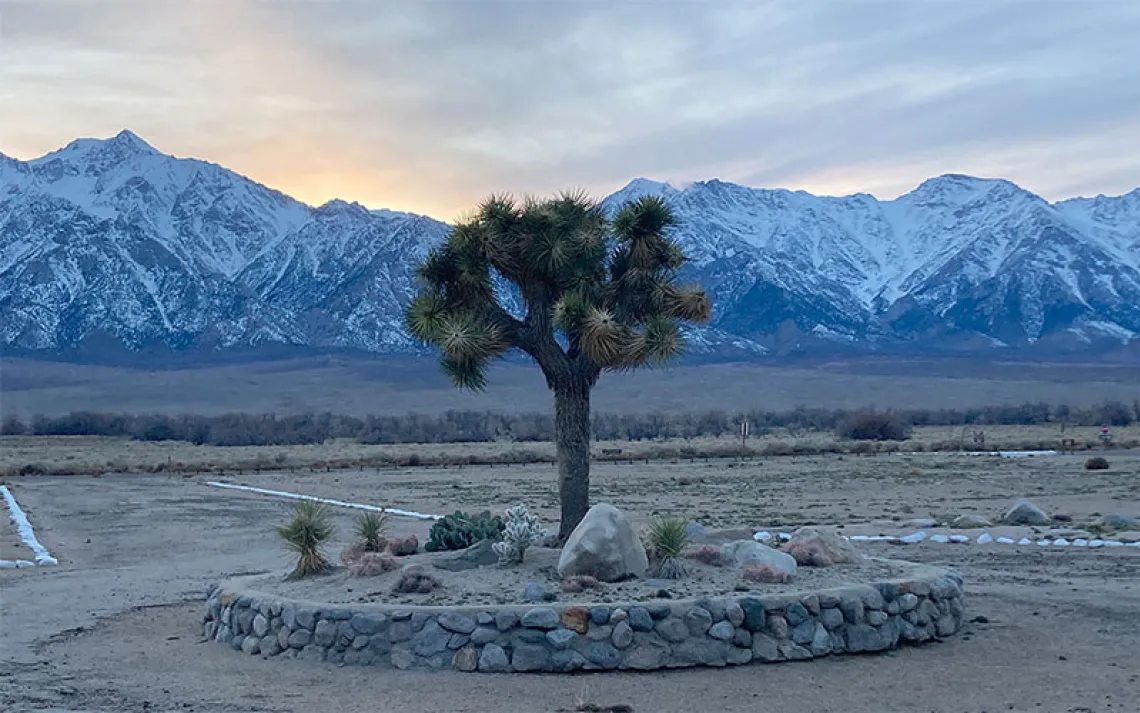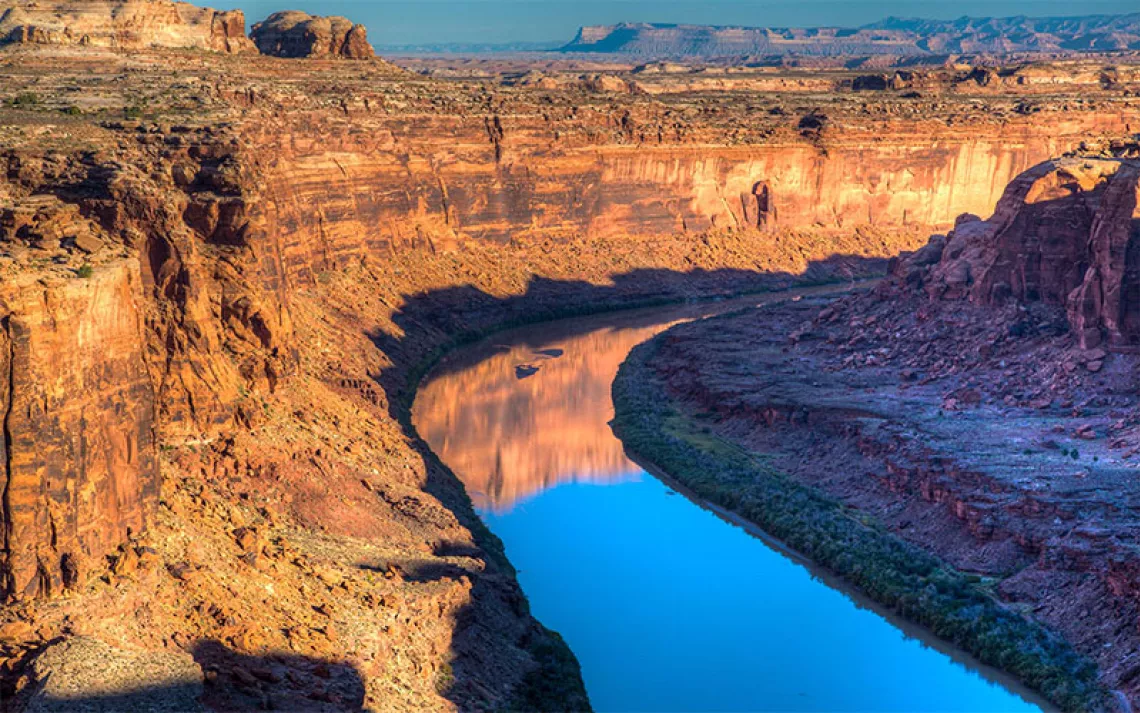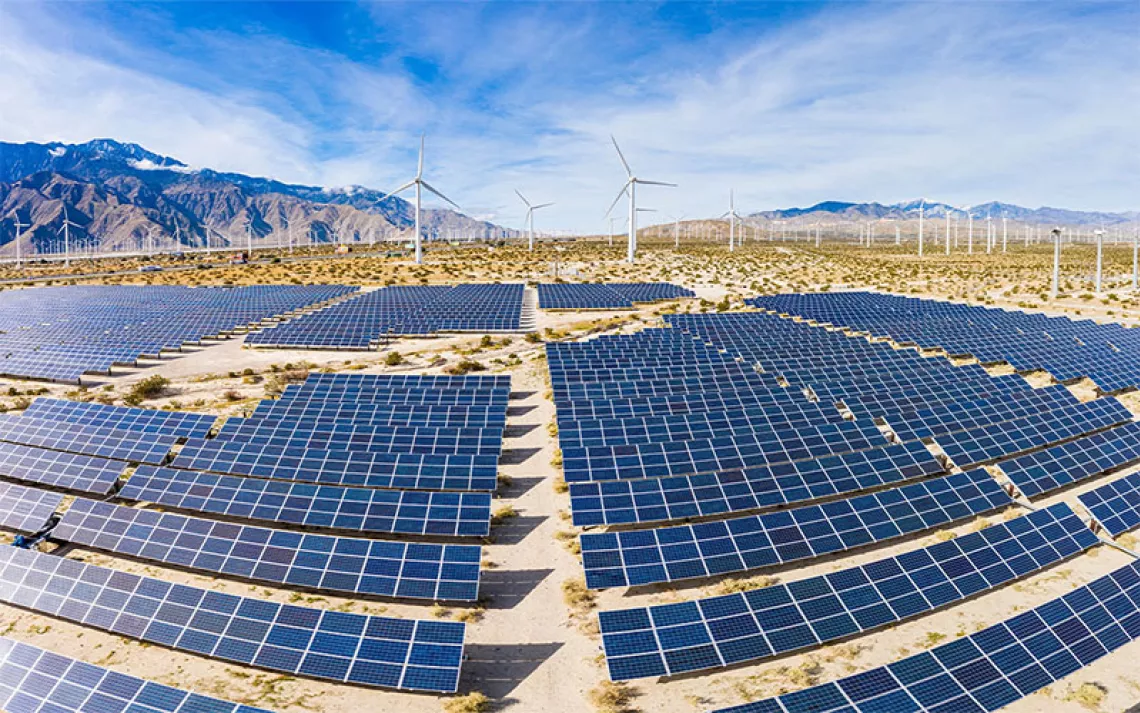7 Latino Heritage Sites in Need of Urgent Protection
Celebrate Hispanic Heritage Month by preserving culturally significant public lands
From the Pacific Ocean, a black steel wall rises—stretching along the open coast—where gulls and other seabirds perch and urchins and mussels cling.
Nearer the shore, however, the border wall’s height looms, and marine life tapers off. At 16 feet tall, it bisects a beach and then an estuary, a river valley, two countries. On land, security cameras surround the wall. Airborne drones fly over this borderland, where Tijuana, Mexico, meets San Diego County, California.
This public land, known as Friendship Park, was inaugurated in 1971 by First Lady Pat Nixon as a shared, binational space. “I hope there isn’t a fence too long here,” she said at the park’s grand opening. But in the decades since, her intentions have been swallowed by politics and policing. Today, in contrast to the Mexican side’s tableau of art and festivity, the US side is a barren patrol route populated by border guards and tumbleweeds. Visitors are heavily limited. Today, activists are calling for Friendship Park to exist as a truly shared, nationally observed space.
“This is where the judicial and environmental injustices meet,” says Dr. Manuel Galaviz, a cultural anthropology professor at California State University, Fullerton. “It’s a very desolate, beautiful environment, and people avoid it because of the level of surveillance.”
Galaviz is one of three authors of a new report published this summer by the Hispanic Access Foundation titled “Place, Story, and Culture: An Inclusive Approach to Protecting Latino Heritage Sites.” The report is intended to “embody the architectural, cultural, and deep historical roots of the Latino community currently in need of preservation.”

Sign up to receive Sierra News & Views
Get articles like this one sent directly to your inbox weekly.
With this action you affirm you want to receive Sierra Club communications and may vote on policy designated by the Sierra Club Board.
Along with Friendship Park, the sites featured in the report include Castner Range (Texas), Chepa’s Park (California), Duranguito (Texas), Fefa’s Market (Rhode Island), Gila River (New Mexico), and Hazard Park (California).
Fewer than 8 percent of nationally designated landmarks in the United States specifically represent Indigenous, Latino, Black, and Asian communities, according to the report—underscoring the need to protect diverse heritages in an increasingly diverse country. One key barrier to this, the report says, is the historic preservation model used to designate sites for National Register recognition, which privileges generational wealth and status.
“Not all communities have the luxury to have existed for 50-plus years,” Galaviz says, referring to the National Register of Historic Places’ half-century age requirement. “A lot of us were immigrants and migrants, living in migrant communities. There are a lot of risks, whether those be environmental, economic, or as we’ve seen very recently, displacement through gentrification.”
For Galaviz and his coauthors—Norma Hartell, a cultural anthropologist at New Mexico State University, and Ashleyann Perez-Rivera, a digital media ranger with the US Fish and Wildlife Service—it was important to include critiques and recommendations for how to improve the dialogue of what it might mean for a particular site to be historically or culturally “significant.”
Acknowledging the “mobility, migration, and displacement” of communities, the report reads, is essential to Latino, Chicano, and Indigenous identity and history, especially in the American West and Southwest. These factors should be inclusive to a site’s history rather than simply a complicating or disqualifying factor in the eyes of the National Register.
“We hope this report reaches politicians and other communities that may have never thought about their home, or neighborhood, or even a park as historical, in ways to preserve and conserve them,” Galaviz says.
There were hundreds of sites, says Galaviz, that deserved inclusion in the report as essential sites of Latino pride, resilience, struggle, and history in America. Ultimately, an urgency for protection—both political and environmental—led the authors to focus on seven. At a few sites, including Friendship Park, these two factors converged, demonstrating the close relationship between environmental and social justice.
Galaviz says he is proud to have deliberately included landscapes, natural features, and parks in the report—deliberate choices that, like Friendship Park, operate outside the traditional National Register list, which is focused on physical buildings and neighborhood districts. Galaviz grew up undocumented in the California mountains, surrounded by deserts and peaks, where wildfires and water scarcity impacted his family’s well-being.
“People who are at the margins are often the ones who feel it when these resources are depleted, who experience climate change first—people like my parents and myself,” Galaviz says. “That is why we are very unapologetic about including places that some other preservationists might have frowned upon. In a report that talks about preservation and conservation, these resources are just as important as a house or a building.”
This includes the Gila River, says Allyson Siwik, executive director of the Gila Resources Information Project. Stretching for 650 miles, through Arizona and New Mexico, the Gila is the latter state’s only remaining “wild river,” Siwik says, meaning it is free from the influence of dams and diversions—for now. Extractive industries and water development threaten the Gila’s natural hydrograph and immense biodiversity: More than 350 species of native birds traverse its migratory corridor, and native fish, snakes, and frogs live among its banks. In Arizona, this infrastructure has stalled the Gila such that it flows freely only around Phoenix. This cautionary tale fuels conservationists who are working to protect the Gila, and to keep it wild.
“In this day and age, if a river or a mountain doesn’t have voices speaking for it, then it’s not defended,” Siwik says. “All these special places are threatened by exploitation.”
The Gila’s history is marked by colonial exploitation. Between 1848 and 1853, the Gila River made up the quickly changing Mexican American border before being annexed by American troops. Earlier still, its basin and surrounding plains were the traditional homelands of Indigenous tribes that include the Mimbres, Piipaash, Apache, and Akimel O'odham. Siwik’s work to preserve the Gila overlaps with the work by Indigenous tribes to advocate for water rights. Preserving the Gila and its history, Siwik says, has contemporary ramifications.
While writing the report, Galaviz says he reflected on modern Latino history in the Anthropocene. He sees Friendship Park as a prescient symbol of modern anthropology and preservation in a climate-changing world.
“If the water level does rise, it will cause so much destruction,” he says. “Maybe it will also knock down the border fence. Water is strong, and water will tear down that wall at some point.”
 The Magazine of The Sierra Club
The Magazine of The Sierra Club




